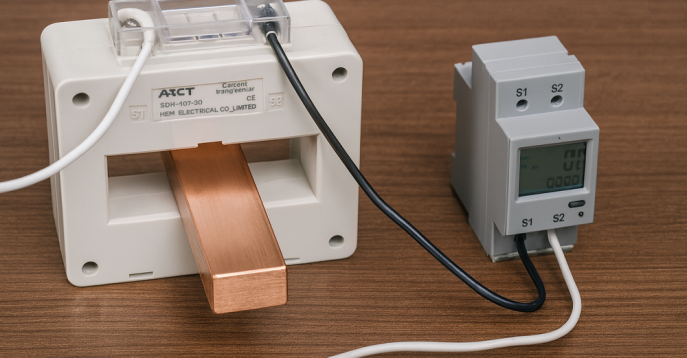News | company news | Dec 14,2024
Sensor network application for environmental monitoring based on the IOT
As the global climate changes rapidly, the need for accurate IoT environmental monitoring has never been more urgent. As global temperatures rise and weather patterns change, the consequences of climate change become increasingly apparent. One need only look at the frequent and intense extreme weather events in the United States to understand that we must take action to predict and prevent further disasters.
However, achieving accurate environmental monitoring requires a large number of IoT devices that can accurately provide data to the system. The Internet of Things refers to a network of connected devices equipped with sensors, software and other technology that can exchange data with other devices and systems over the Internet. In the field of environmental monitoring, IoT devices can collect data covering everything from temperature and humidity to pollutant levels, radiation and more to provide comprehensive information on the state of the earth.
The Internet of Things has and is dramatically changing the way we track and analyze environmental data, helping us gain insight into the patterns and impacts of climate change. For example, a global network of sensors uses real-time data analysis to warn of dangers and guide people to avoid risks. However, the implementation of such a large-scale project faces many risks and obstacles.
A Deeper Understanding of the Internet of Things in Environmental Monitoring
The Internet of Things has emerged as a key force in environmental monitoring, providing a dynamic and interconnected means of tracking the health of the planet. Essentially, IoT-based monitoring is the systematic collection of environmental data through a network of sensors and connected devices. These sensors are strategically placed in ecosystems ranging from cities to remote areas, capturing real-time data that is critical to understanding and responding to environmental changes.
Many types of sensors form the core of the IoT network. These include temperature sensors, humidity sensors, proximity sensors, motion sensors, light sensors, pressure sensors, accelerometers, gas sensors, and more. Each sensor plays a unique role in painting a comprehensive picture of different environmental conditions. For example, temperature and humidity sensors can provide key data to understand heat waves or drought conditions, while gas sensors are essential for monitoring air quality and detecting harmful pollutants.
Indeed, the importance of real-time data in environmental analysis cannot be overstated. It provides instant insight and allows for rapid response to potential threats, such as pollution spikes or unexpected climate events. Real-time data also helps create predictive models to inform policy decisions. At the same time, the immediacy of data increases public awareness and engagement, leading to a more informed and proactive society in the face of environmental challenges.
Global sensor network
The global sensor network built through the Internet of Things is a major breakthrough in our ability to monitor and understand the impacts of climate change. This network consists of a series of sensors distributed in different ecosystems, capable of capturing real-time data on a large number of environmental parameters. From cities to wilderness, these sensors can record everything from temperature changes to pollutant levels.
The rational deployment of IoT devices makes it possible to collect data in a comprehensive and accurate manner. By providing a continuous stream of data, these devices can instantly detect environmental anomalies, which is crucial for responding to sudden ecological crises.
To demonstrate the potential of this technology, numerous case studies have demonstrated successful applications of IoT in environmental monitoring. Projects around the world have used IoT to track air and water quality, manage natural resources, and protect wildlife habitats. These practices highlight the versatility of IoT technology in generating useful data to inform policymaking and conservation efforts.
The impact of IoT on climate change tracking
With the help of interconnected sensor networks, the Internet of Things can provide a dynamic picture of the state of the Earth’s atmosphere, providing insights into the patterns and impacts of climate change. These extensive sensor networks generate massive data sets that can be used to clearly identify and understand climate patterns, making it possible to detect subtle changes in environmental conditions and track long-term trends.
Artificial intelligence (AI) is also improving the efficiency and accuracy of these IoT sensor networks. By applying machine learning algorithms, AI can optimize sensor placement, improve data accuracy, and extend the life of sensor networks. AI-driven analytics can process and interpret the vast amounts of data collected by IoT devices, transforming raw data into valuable insights.
For example, predictive models based on historical and real-time data analysis are perhaps one of the most valuable capabilities of these sensor networks. These models can predict future environmental conditions, allowing preventive measures to be taken to address potential climate-related disasters.
This forward-looking approach is essential to mitigating the impacts of climate change and adapting to its inevitable consequences. We continue to rely on a growing network of devices and the power of automation. If the timing is right, we have the opportunity to move toward a more resilient and sustainable future, armed with the knowledge to anticipate and address future environmental challenges.
Challenges and solutions
Although the Internet of Things provides a revolutionary way to track climate change, there are also many problems. Deploying sensor networks in various complex and even harsh environments may encounter technical challenges, such as ensuring the consistency of data quality and maintaining the reliability and accuracy of sensors over the long term. In addition, the massive amount of data generated may put tremendous pressure on storage and processing capabilities, thus requiring a powerful data processing and analysis architecture.
Security issues are also important, as the interconnectedness of IoT devices can create potential vulnerabilities that could lead to the disclosure of sensitive data. It is extremely important to protect the privacy and security of this information, as it is fundamental to our understanding and response to climate change. In addition, the initial cost of implementing IoT solutions is high, which to some extent hinders their widespread use, especially in resource-limited areas.
However, these challenges are not insurmountable. IoT technology continues to advance, providing solutions that enhance the resilience and efficiency of sensor networks. For example, edge computing enables data processing closer to the source, reducing latency and bandwidth requirements. As IoT devices become more energy-efficient and cost-effective, machine learning algorithms are also evolving to improve the accuracy of data analysis and predictive modeling.
Future Development Direction
Overall, the convergence of IoT with emerging technologies such as 5G, edge computing, and advanced analytics promises to accelerate the speed and efficiency of data transmission and processing. This integration promises to enable more sophisticated environmental models and simulations, leading to a deeper understanding of the complex interactions in our ecosystems.
The expansion of low-power wide-area networks (LPWANs) will extend the coverage of IoT devices, facilitate the deployment of sensors in previously hard-to-reach areas, and enrich our environmental data sets. This increased coverage will help to fully capture the impacts of climate change in different regions.
In addition, the IoT has great potential to advance climate change mitigation efforts. With more accurate and timely data, policymakers and environmentalists can develop more effective strategies to protect biodiversity, manage natural resources, and reduce greenhouse gas emissions. Public-private partnerships may play a key role in this effort, driving innovation and accelerating the adoption of IoT solutions across industries.
Essentially, the IoT trend in environmental monitoring is full of opportunity. When we harness these emerging technologies, we not only enhance our ability to understand the current state of our environment, but also empower us to shape a more sustainable and resilient future. We must take clear action: industry, government and communities must work together to fully tap the potential of the IoT and ensure a thriving planet for future generations.
--- END ---

Oct 18, 2025
Battery current sensor from HEYI Electric – Providing Safer Protection for Clean Energy Why clean energy systems cannot do without leakage detection Carbon neutrality is the common goal of the earth. In an era when clean energy is becoming increasingly popular – from electric vehicle charging stations to photovoltaic power generation systems and energy storage… Continue reading How battery current sensor serve clean energy

Oct 09, 2025
HEYI Electric’s SDH Window-type CT : a universal player for European and American projects Two frequency options : 50Hz /60Hz for Europe and 60Hz for North America. One set of assembly design is universally applicable worldwide , so there is no need to distinguish two sets of product numbers for cross-border and cross- regional projects… Continue reading Window-type CT suitable for EURO and US projects

Oct 07, 2025
In environmental protection projects (sewage, waste gas, solid waste, photovoltaic energy storage grid connection, etc.), reliably transmitting current signals from equipment such as fans, pumps, dosing, heating, and oxidation to PLC/SCADA systems is the first step to ensuring energy conservation , stability, safety , and operational maintenance . The HEYI Electric KCT-L series is designed… Continue reading How to Use DC 4-20mA Current Transmitter in Environment